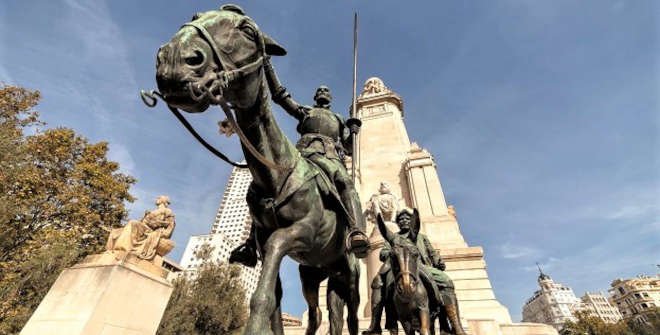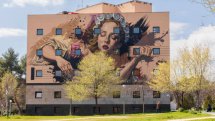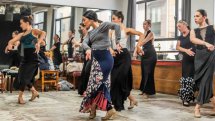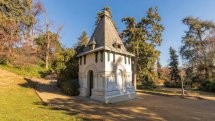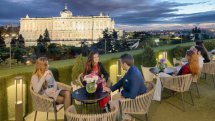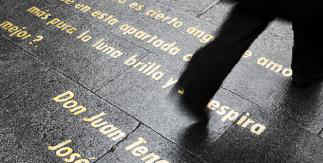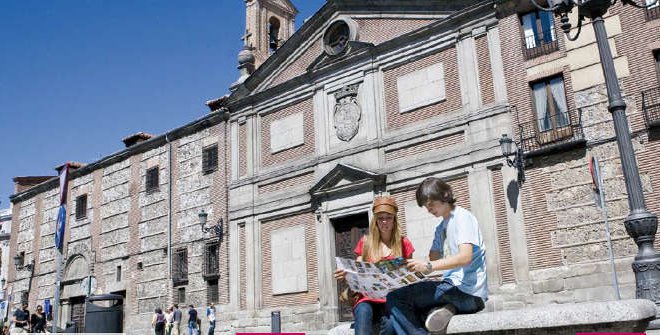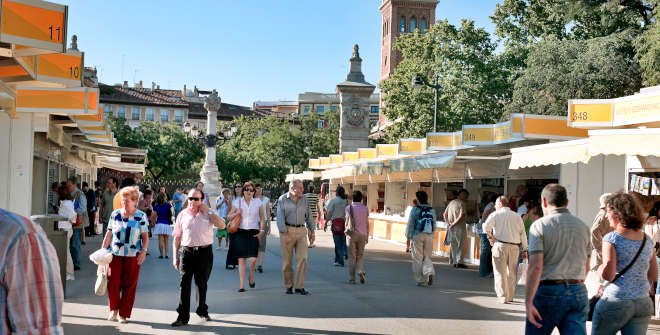Literary Madrid
For centuries, cities have played a central role in literature. None, however, can compare to Madrid; our city is special. Not only because it features in novels by authors such as Benito Pérez Galdós, Ernest Hemingway and Almudena Grandes, but also because some of the best writers of all time have lived in the city's inns, frequented its cafés, and have been members of the Madrid-based Royal Spanish Academy. By Ignacio Vleming
Without a doubt, the most famous of all is Miguel de Cervantes, but there were other authors during the Spanish Golden Age who called the capital home, among which are three great Madrid-born playwrights: Tirso de Molina, Calderón de la Barca and Lope de Vega. To this day, a stroll through the Barrio de las Letras (Literary Quarter) reminds us so much of one of their comedies, where swordsmen, casanovas, noblemen, and servants would get into trouble to the rhythm of hendecasyllabic and narrative poetry on the stages of the city’s open-air comedy playhouses known as corrales.
Today, we can trace their footsteps to Teatro Español—which first opened its doors in 1583—, Teatro de la Comedia, the St. Sebastian Church (headquarters of the official association of actors), and the Imprenta de Juan de la Cuesta (Juan de la Cuesta’s Printing Press), which published the first edition of Don Quixote in 1605, and is today home to the Cervantes Society.
The one-armed man of Lepanto—as Cervantes was called—lived in various apartments in the neighbourhood known back then as "Las Musas". One of his first dwellings in the area was directly above the restaurant Casa Alberto. This is why when the writer died, he was buried in the neighbouring Descalzas Reales Monastery.
Just a stone’s throw away is the Lope de Vega House Museum, which commemorates the hugely successful writer who spent the last years of his life in this Castilian mansion together with his daughters. It was there he would take care of his young lover, Marta de Nevares, who suffered serious bouts of madness and who the so-called "Phoenix of Wits" would outlive.

Then, with the arrival of the 18th century, came new ideas. This period saw comic sketches called sainetes by Ramón de la Cruz, the epistolary novel by José Cadalso, the pedagogical texts of Gaspar Melchor de Jovellanos, and morality plays written by Leandro Fernández de Moratín. Head to Calle de las Huertas and you'll find quotes from these very authors printed on the pavement.
In the first half of the 19th century, Romanticism conquered the hearts of many young Spaniards, and it was after this movement that one of the most unique museums of Madrid was named: the Museum of Romanticism. This period gave way to the essays of Mariano José de Larra, the legends and tales of Gustavo Adolfo Bécquer, and the poems of Carolina Coronado and Gertrudis Gómez de Avellaneda.
In response to this huge wave of emotions, the naturalist movement came to the fore. Some outstanding examples of naturalism are novels by Fernán Caballero (the pseudonym used by Cecilia Böhl de Faber), as well as works by Emilia Pardo Bazán and Benito Pérez Galdós. The latter, a writer from Las Palmas de Gran Canaria, became a renowned chronicler of Madrid thanks to novels such as Fortunata y Jacinta and Misericordia (or, Mercy). A fantastic statue of Galdós by Victorio Macho, erected using public donations in El Retiro Park, is representative of the genuine affection the people of Madrid felt for “their author”, despite him portraying them with certain sarcasm in his novels. The Athenaeum of Madrid was the scene of heated intellectual debates during the 19th century, while the early 20th century saw the home of publisher and collector José Lázaro Galdiano play host to thrilling literary evenings. Today, we can visit his house which has since been turned into a museum.
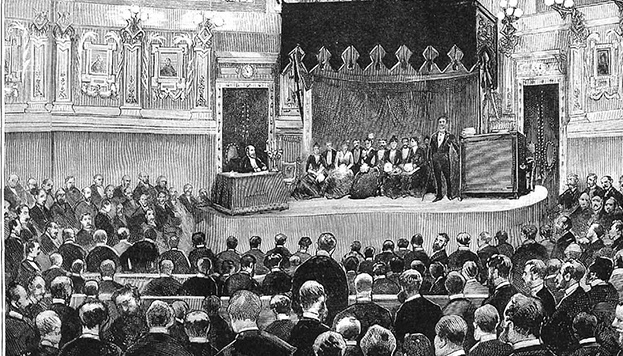
From the beginning of the reign of Alfonso XIII in 1902 to the outbreak of the Civil War in 1936, Spain basked in what was a period of tremendous cultural splendour, the heart of which was the neighbourhood of Chamberí. During the so-called Silver Age, Madrid welcomed three generations of artists and intellectuals influenced by regenerationism and European avant-garde trends.
First there was the Generation of '98, formed by the likes of Pío Baroja, Miguel de Unamuno and Ramón María del Valle-Inclán. Then came the Generation of '14, with esteemed thinkers like José Ortega y Gasset, poets such as Juan Ramón Jiménez and writers impossible to categorise, such as Ramón Gómez de la Serna, whose office can be visited in what is today the Conde Duque Museum of Contemporary Art. And finally, the Generation of '27, renowned throughout the world thanks to poets Gerardo Diego, Vicente Aleixandre and Federico García Lorca. The latter lived in the illustrious Residencia de Estudiantes halls, today a cultural centre where you can find a room that looks exactly like it did in the 1920s.
This was also the golden age of cafés in Puerta del Sol, which, every afternoon would host uninterrupted gatherings of writers, artists, politicians, and bullfighters to discuss everything from the divine to the human. We then saw the opening of the well-known Café Gijón and Café Comercial, which still welcome customers today.
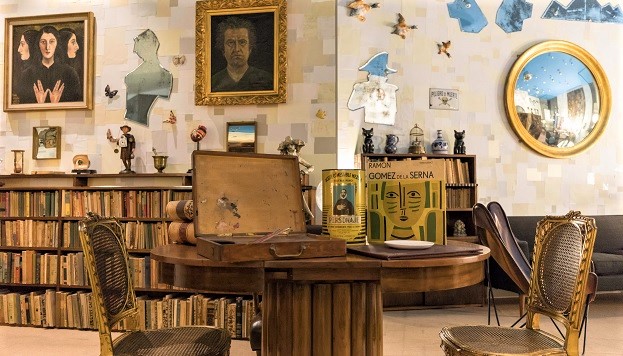
The outbreak of the Civil War put Madrid on the front page of international newspapers. And so, the best correspondents from Europe and the US headed to the capital. Many of these would become important writers in the years to come, such as John Dos Passos, André Malraux and Antoine de Saint-Exupéry. Among them was Ernest Hemingway, who fell deeply in love with Spain and wrote about Madrid in some of his most famous works like For Whom the Bell Tolls. As well as this, many Latin American writers visiting Europe would pass through Madrid on their way to Barcelona, Paris, London or Rome.
Rubén Darío, Pablo Neruda, Gabriela Mistral, Jorge Luis Borges and Mario Benedetti all spent long periods of time in the city, making Madrid one of the capital cities of literature. This group would be incomplete without Nobel Prize winner Mario Vargas Llosa, who also made the city his home.

From the post-war period onwards, Madrid once again had a huge presence in Spanish literature. Outstanding examples of this are works such as The River by Rafael Sánchez Ferlosio, The Hive by Camilo José Cela, Time of Silence by Luis Martín-Santos, and The Maravillas District by Rosa Chacel.
There are so many authors with a connection to Madrid that it would be impossible to list them all. This post-war generation also included the much-loved poet Gloria Fuertes, resident of the Lavapiés neighbourhood and a regular at the restaurant Taberna de Antonio Sánchez, and journalist Francisco Umbral, a dandy for whom the city was a literary genre in itself. Between the 19th and 20th centuries, authors such as Arturo Pérez-Reverte with his Captain Alatriste, Elvira Lindo and her Manolito Four-Eyes, and Almudena Grandes with her series Episodes of an Endless War became some of the most well-known writers to depict the capital in their novels. Today, a new generation of authors follows in their footsteps, led by Madrid-born Andrés Barba, Mercedes Cebrián and Javier Montes, observing and analysing a society that's very different to how it was twenty years ago.

As of November 2022, the city's Atocha Station has taken the name of writer Almudena Grandes, who passed away the year before (Estación de Madrid – Puerta de Atocha – Almudena Grandes). This place is of great importance to many adopted Madrileños born elsewhere, and who, like Galdós, often depict the atmosphere of the city with more spontaneity.
For example, Leaving the Atocha Station is a novel in which North American writer Ben Lerner paints a picture of Madrid that is familiar to all who live in the capital. In 2020, Andrés Trapiello published Madrid, an unexpected literary success in which the author describes the relationship he has with his new home. We also see this connection in works by Ramón J. Sender, Carmen Laforet and Carmen Martín Gaite, all of whom were born elsewhere but were adopted by the capital. To this list we should also add Elena Medel, who tells a tale of Madrid that goes beyond its M-30 motorway in The Wonders.
And, last but not least, let's not forget that Madrid is also home to some of the best poets of recent generations, including Carmen Jodra, Sandra Santa, Patricia Esteban, Sofía Rhei, Vanesa Pérez-Sauquillo, Mario Obrero, Sergio Adillo, Nemanja Kuzmanovski, María Martínez Bautista… and the list goes on.
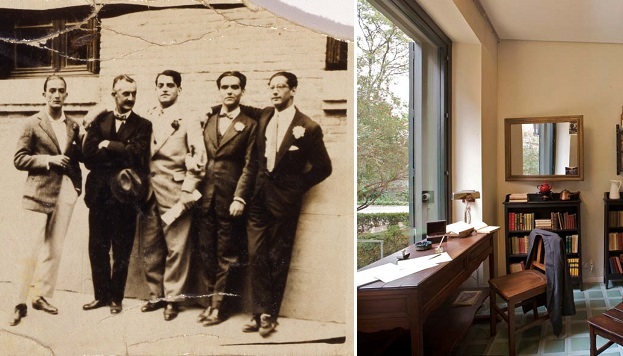
A LOS MADRILEÑOS NOS GUSTA
Algunos de los mejores escritores de todos los tiempos han vivido en sus pensiones, frecuentado sus cafés o conquistado la cátedra de sus academias. Sigue su rastro por Madrid.
13 hoteles de Madrid ostentan esta distinción que La Guía MICHELIN ha estrenado en 2024
A muchos metros de altura conviven en la Gran Vía de Madrid esculturas de dioses, humanos y seres de lo más variopinto. ¿A quiénes representan?
En estas dos tiendas, una clásica y otra moderna, encontrarás tu complemento estival perfecto.
Festivales de música, terrazas con piscina, noches eternas, fiestas… La ciudad cuenta con numerosos planes para vivir un verano inolvidable.
Un itinerario que homenajea a la actriz recorriendo 20 localizaciones ligadas a ella
